Long and medium length strands allow you to braid them in a variety of ways, creating unusual hairstyles. When forming braids, I want them to look voluminous and textured. This can be achieved both by weaving itself, and by applying some hairdressing tricks.

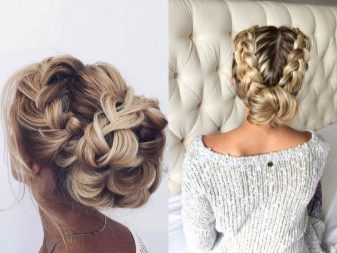
Secrets of magnificent braids
The owner of a rich head of hair does not have to worry especially about the splendor of the braid. Those with thin strands need to take additional measures to achieve the desired effect.
Additional volume is provided by:
- weaving of narrow braids;
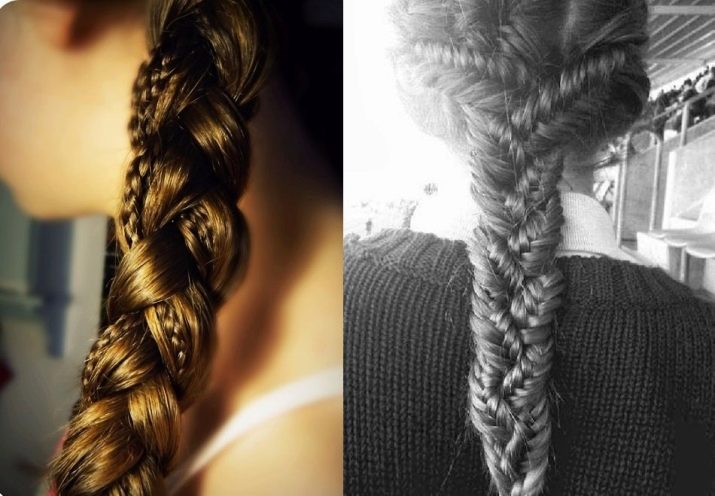
- bouffant;
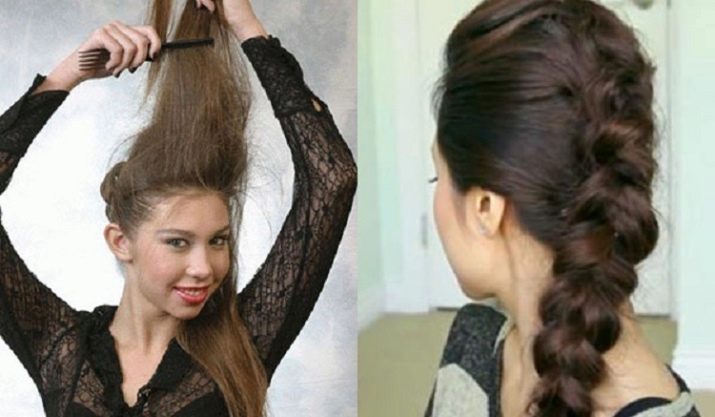
- corrugation;
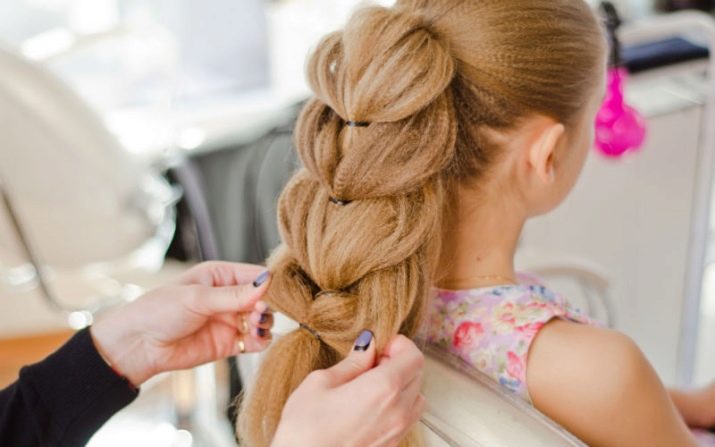
- the use of curlers;
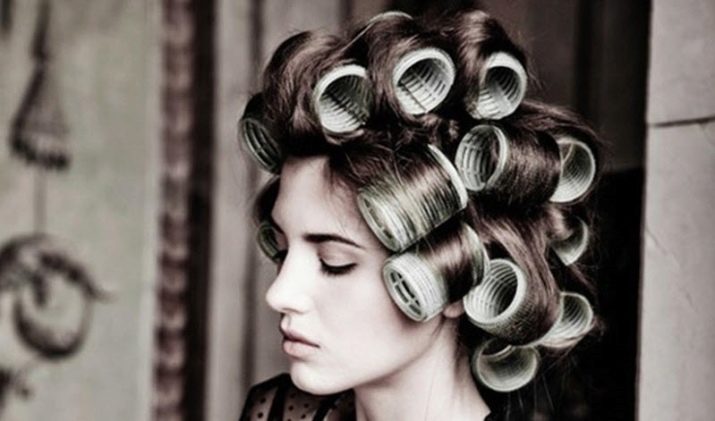
- the use of artificial hair.
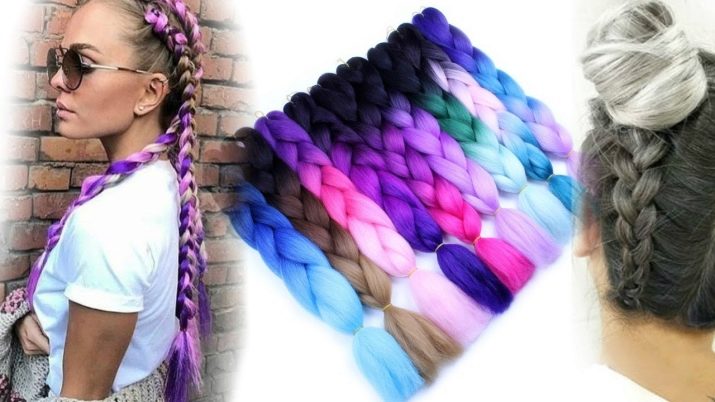
The safest method for preparing hair is the use of thin braids, which are braided after washing your hair on slightly wet strands. With small braids it is best to spend the night, and in the morning to untangle them. This will provide splendor. A braid on this basis can look rich.
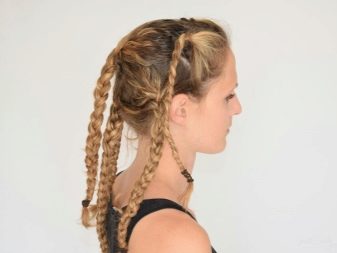
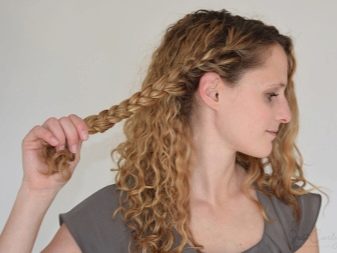
If there is no time for weaving small braids, you can use the corrugation nozzle for the curling iron, after treating the strands with a heat-protective composition.
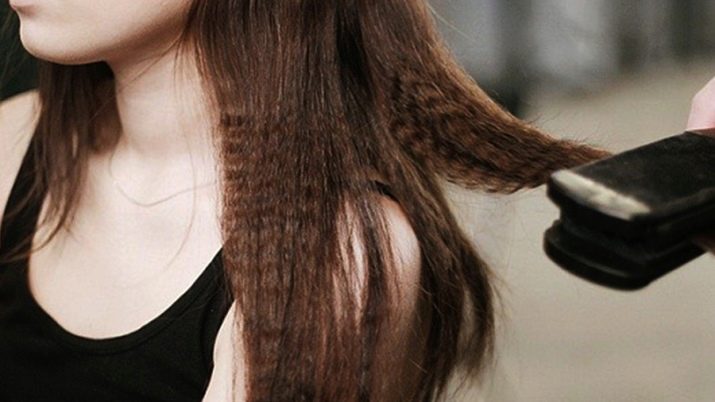
Using curlers gives about the same effect as pigtails or curling irons with a nozzle. Just outwardly, the curls resemble rings. Handling them carefully, you can achieve a very rich texture when weaving.
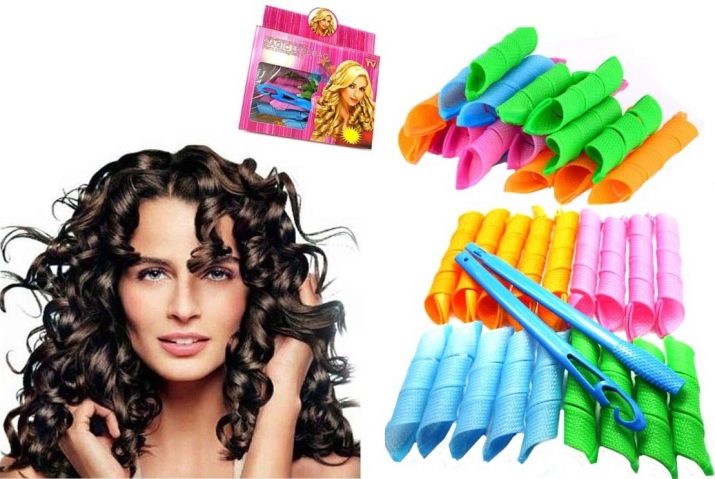
The fastest way to add volume is to pile, although this is an undesirable means of achieving the desired effect, because with this approach the hair is stressed. To comb them, use a comb with frequent cloves.
It is undesirable to use this approach on long hair. They will be difficult to comb, returning to its original state.
The fragile structure of the hair shaft is also an obstacle to the use of such a hairdressing technique.
With a pile, you can create volume at the root or in length. The choice depends on what result you want to achieve.

To create hairstyles with voluminous braids, you can use strands on hairpins or extensions. For those who have liquid hair, this is a good solution. And you can use such "tricks" for a long time.
After the braid is braided, it remains to straighten it slightly, stretching out the curls. This must be done very carefully so as not to damage the existing pattern. Pull should be from the beginning of weaving, moving to the end.
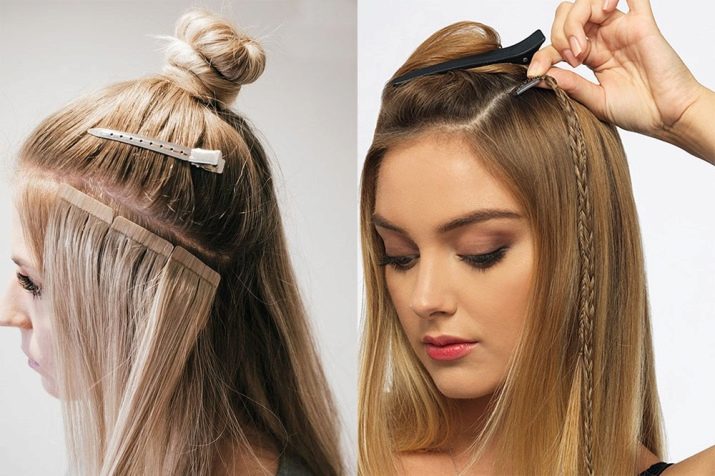
You can pull out only the extreme strands, or straighten all the links as a whole. Externally, the braids look different.
Weaving options
Volumetric braids on long and medium hair are braided almost identically in one way or another. Short hair can also be braided, but more difficult to handle. Braids can be weaved from the forehead back, from the back of the head to the neck. Beautiful weaving is obtained if you first comb the hair to one side, then perform a braid on one side of the face.
Thanks to this, it is possible to create a sensual mysterious image.
Such a hairstyle is suitable for owners of narrow faces, with shapes close to an elongated oval or sharp features - irregularities are hidden due to weaving in this version.

It should be borne in mind that square or round faces with such an arrangement of braided hair will seem heavy. In order not to create such an impression, you need to release a couple of curls from the side opposite from the braid.
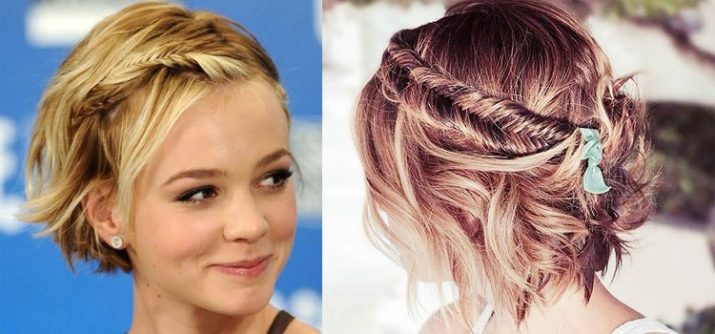
The easiest way is to make the braid to one side if the hair reaches the shoulder blades. If the strands are medium length, you will need to use false hair.
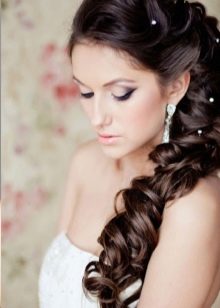
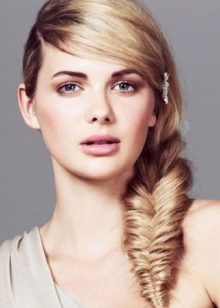
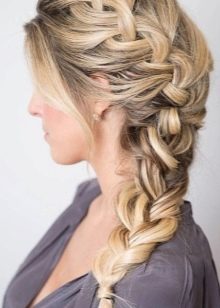
Whatever arrangement is discussed, with the proper skill, you can braid your hair yourself, creating a hairstyle for every day or for a holiday. You can independently weave not only a simple three-strand, but also more complex options.
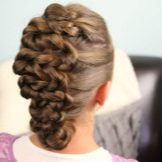
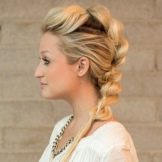


French
To make a volumetric braid in a French fashion, it is advisable to lift the hair on the crown and secure it with invisibles. Further step by step the procedure looks like this:
- highlight three strands;
- make two peroxide, as at the beginning of the creation of the usual braid;
- gradually adding hair from the total mass to the side elements of the braid, to braid to the end;
- when all the hair is involved, complete as a normal braid;
- make it airy by stretching the weaving elements.
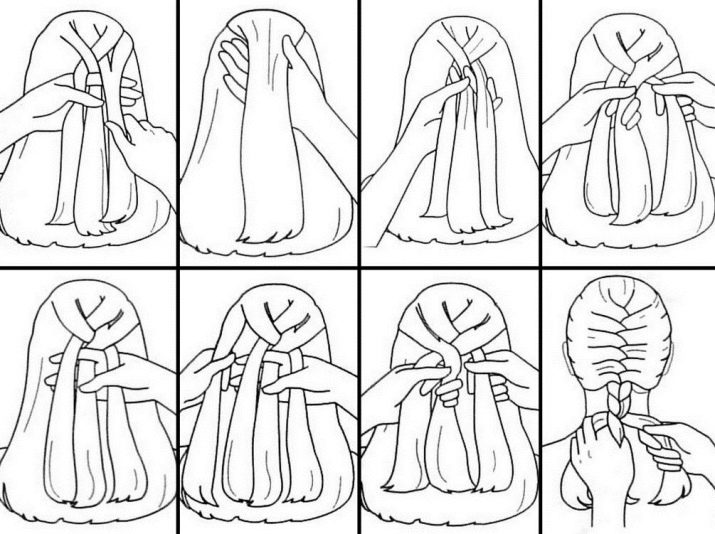
Acting in this manner, you can create an inverted French braid or, as it is also called - a braid inside out. For this, the lateral components are not superimposed on the central element, but are wound under it.
French weaving is very beautiful if you braid two such braids. This is a good option for strands of medium length.

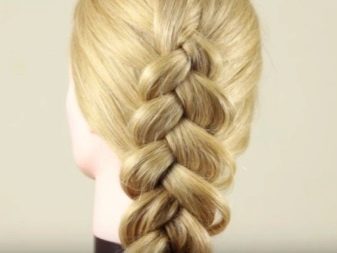
Of four strands
Weaving 4 strands is not too different from creating a three-strand braid:
- hair is divided into 4 parts;
- starting from the right or left side, the extreme strand is superimposed on the adjacent one;
- passes under the third;
- superimposed on the fourth;
- in the second row, the movement is repeated again;
- reaching the end, it remains to fix the hair with an elastic band.
The secret of the correct braid is not to leave out of sight the location of the extreme strand, which takes place in turn first above and then under the next to the fourth.
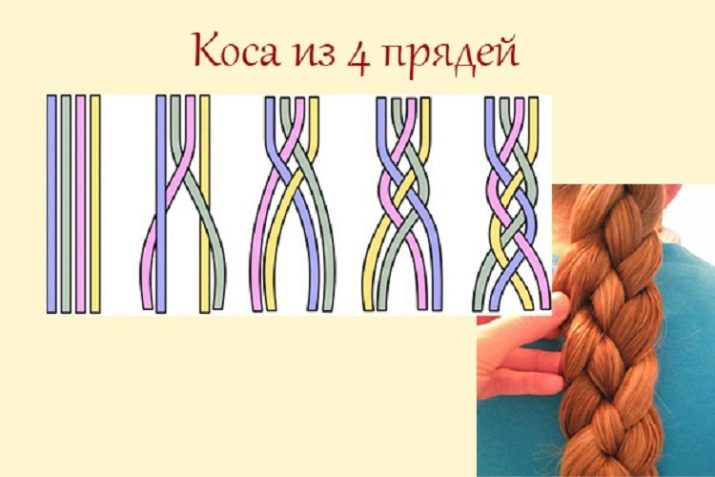
Of five strands
Before undertaking the weaving of an ordinary braid of 5 strands, it is advisable to experiment on the hair gathered in the tail. To learn the movement will be easier. Then you can start weaving the usual 5-strand braids:
- divide all hair into equal parts in an amount of 5 pieces;
- hold the fifth strand over the third and under the fourth;
- the first is above the third and under the second;
- now fifth over fourth and under third;
- the first is above the third and under the second;
- after this, the cycle is repeated until all hair is woven into a braid.
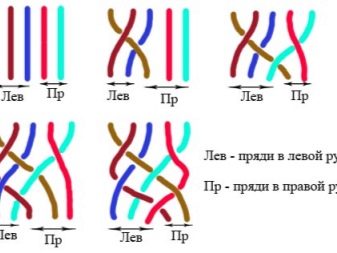
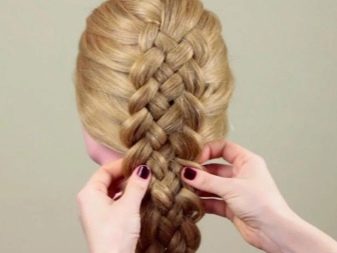
If this way of weaving seems tricky, you can use the same principle as when creating a braid of four strands - focusing on alternately passing above and below adjacent parts of one strand, the path of which begins on the right or left side.
Bezel
Hair can be braided in the form of a rim, combining it with loose strands. You can make such an element of two braids:
- comb hair in the region of the crown;
- over the ear, highlight a strand of hair and braid in the usual way;
- fix with an elastic band;
- slightly fluff, stretching out along the edges of the strand;
- make the same braid in the area of the other ear;
- fix the end of one braid at the opposite;
- do the same with the second.
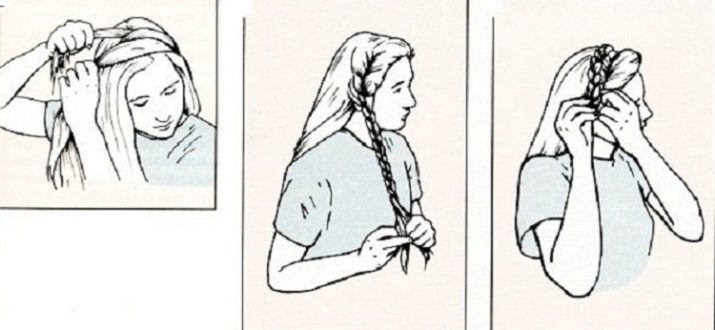
You can make a bezel from a braid:
- to distinguish between front and back hair with a horizontal parting;
- tie the back with an elastic band so that they do not interfere with weaving;
- at the temple highlight thin strands;
- moving along the forehead to form an inverted French braid;
- reaching the unused hair in the back of the head, fix with an elastic band;
- clean under loose hair.
The rim will look different if you make it the usual French weaving, laying side locks on the center.
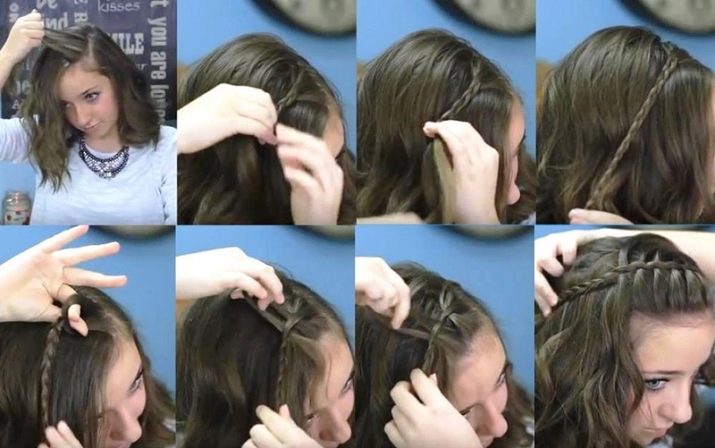
"Fish tail"
Weaving in this way differs from ordinary braids in that what is it done on the basis of two leading strands:
- on strand 1, a thin strand is taken, taken from the mass of hair on the side of the head to which the leading strand 2 is closer;
- then, from the mass of hair from the side of strand 2, another thin strand is superimposed on strand 1;
- this continues until all the hair is woven into a braid;
- the remaining hair length is braided in the same way when thin strands stand out from strand 1 and are transferred to strand 2, and then the operation is repeated the other way around;
- this is done until all the hair is in the fish tail.
Based on this approach to creating hairstyles, you can make two braids or more. Moreover, they are voluminous and rich.
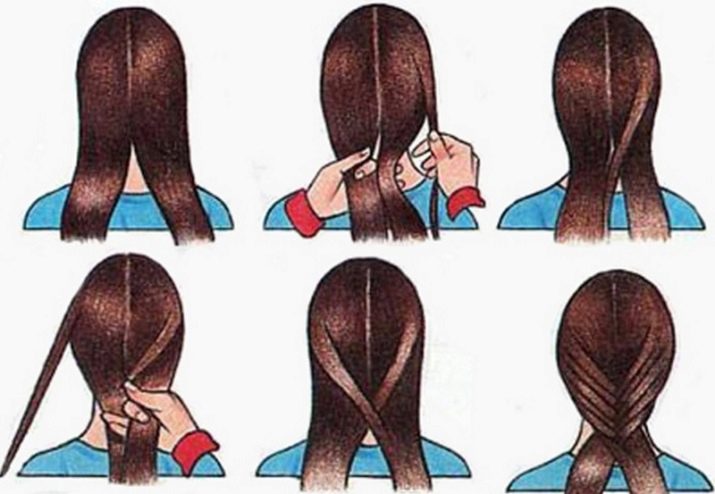
Greek
The classic weaving of a Greek braid looks like this:
- with a vertical parting, part the hair in two halves of the same volume;
- each part weave a French backslash;
- the ends should be directed to opposite sides, securing with invisibility behind the ears.
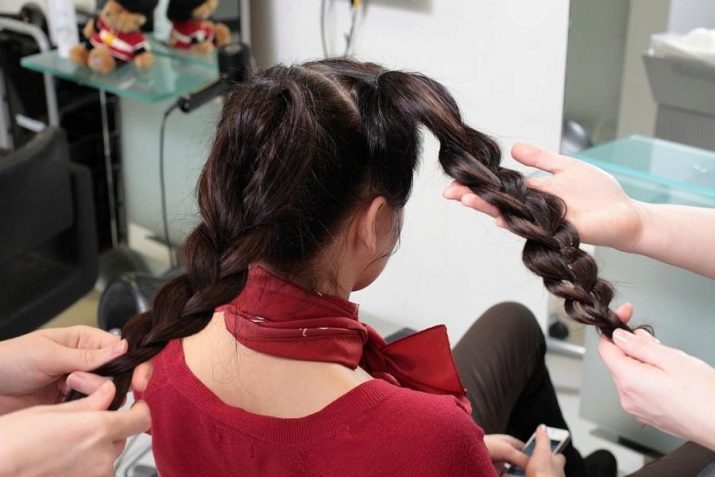
In Greek, you can make a braid from harnesses around the head:
- at the temple to separate two strands and make a coil, intertwining with each other;
- select another strand from the mass;
- include in a tourniquet;
- make a new round;
- so in turn to include all hair in a hairstyle;
- hide the tip at the beginning of the braid and stab it so that the hair does not stick out.
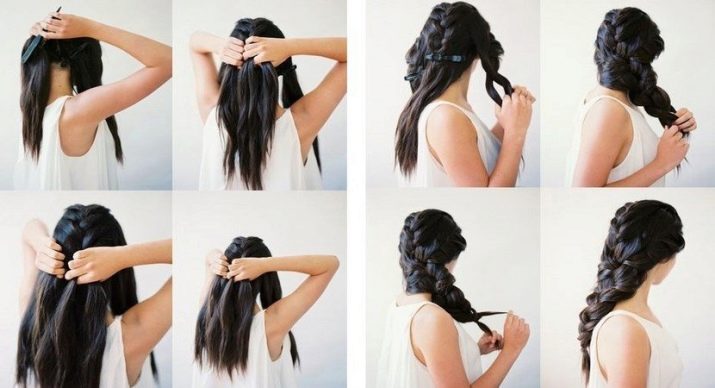
The curly-looking festive braid also comes out of the curls:
- divide the hair into 4 parts - a vertical parting in the parietal zone and horizontal into the upper and lower occipital zones;
- all strands, except those located in the lower occipital area, stabbed;
- curl the ends of the lower hair into a curling iron and make a light pile;
- do the same with part of the hair from the area above;
- to lay the curls so that they are intertwined magnificently;
- do the same with the hair on the top, making a good root pile in this zone;
- the ends of the front hair curl;
- bring back;
- to stab;
- fix with varnish.
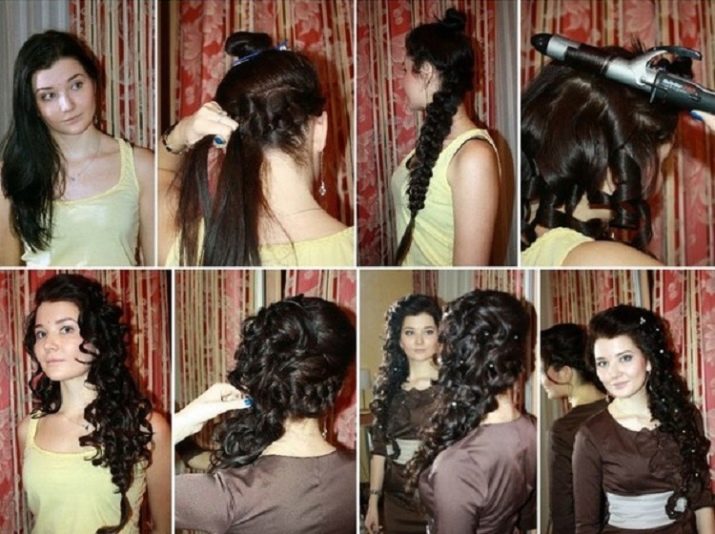
With rubber bands
Those who are unable to braid a complex pattern of strands can use elastic bands. They also allow you to get a magnificent hairstyle in the form of a braid:
- comb your hair back;
- select a part of the hair from the forehead;
- fasten with silicone rubber;
- point forward to the face so that the tail does not interfere;
- behind, make another tail of the same size;
- divide the first into two equal parts;
- “Grab” with them the following;
- the second also forward and secure;
- to the halves of the first tail add strands from the sides and fix together with another rubber band;
- separate the strands of the previous tail into two halves and repeat the procedure;
- so pick up the hair all over the head;
- at the end there are two tails;
- on the one above, put on an elastic band, stepping back from the root so that you can stick the tail below it into it;
- in such a way to finish weaving;
- Gently stretch the hair to give the hairstyle splendor.
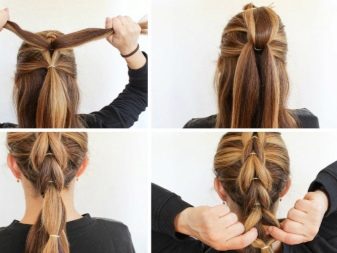
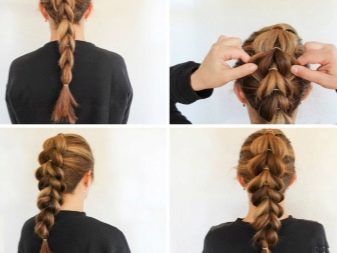
Hairdresser's recommendations
Most girls acquire elementary weaving skills from childhood. Nevertheless, to create voluminous beautiful braids, practice is required for the hands themselves to remember one or another order of actions. Experienced hairdressers willingly share their tips.
Before embarking on new types of weaving on the head of a living model, it is better to use a simulator - a mannequin head with hair, which can be purchased at a specialized hairdressing salon.
The length of the hair on a mannequin should reach 50 centimeters.

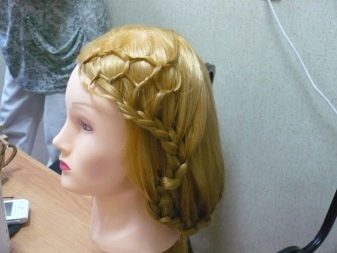
When creating braids, the following tools may come in handy:
- comb with frequent teeth;
- tail comb for easy separation of strands;
- clamps;
- various clamps such as rubber bands, ribbons, hairpins, invisible;
- foam, hair spray;
- curling tools - curlers, curling iron, ironing.
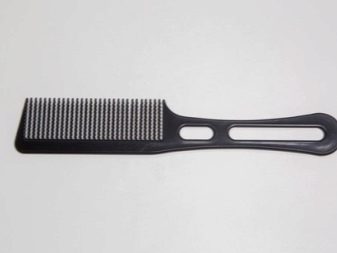

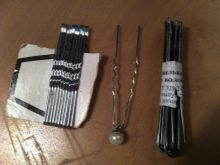

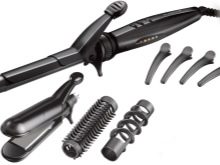
Many girls are faced with the fact that during weaving, hair often tangles. The longer the strands, the more serious the problem.
This can be avoided in only one way - with each application of one part of the hair to another, dividing them along the entire length.
To keep the braids for a long time, they need to be braided more tightly. “Fishtail” holds its shape best. And also the most stable haircut is the one in which braids are laid in a circle.
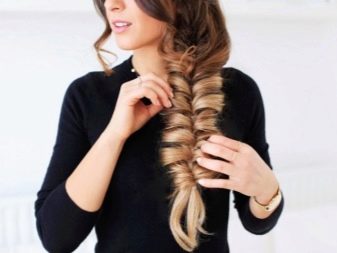
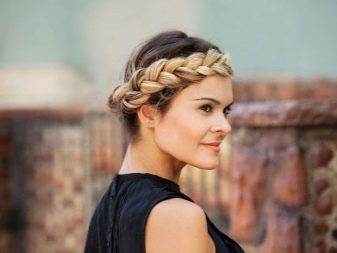
Beautiful examples
Using a large number of silicone rubber bands create a textured fluffy braid. Even if the hair is thin, in such a styling it is imperceptible.

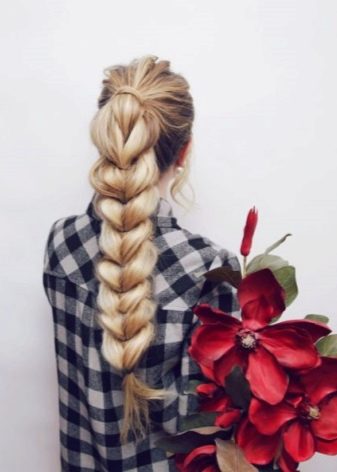
A braid of curls looks special.
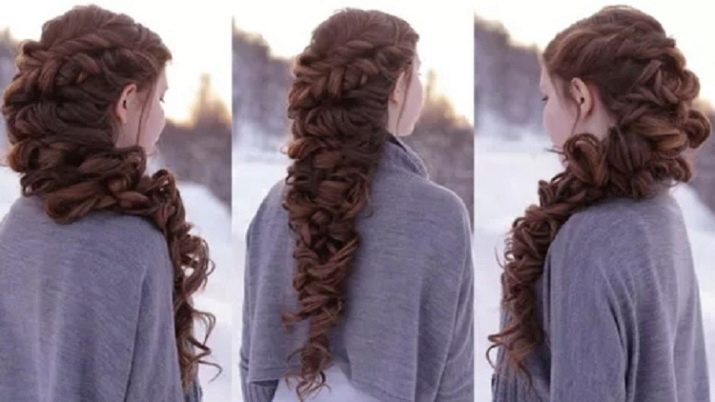
The four-strand braid seems complicated in execution and attracts attention with its texture.
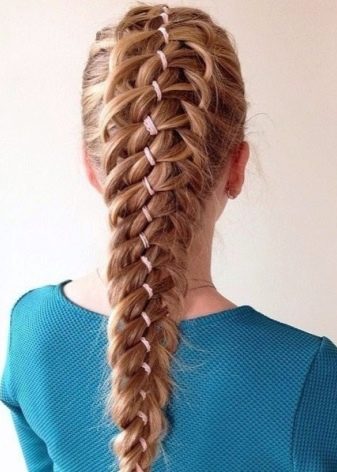
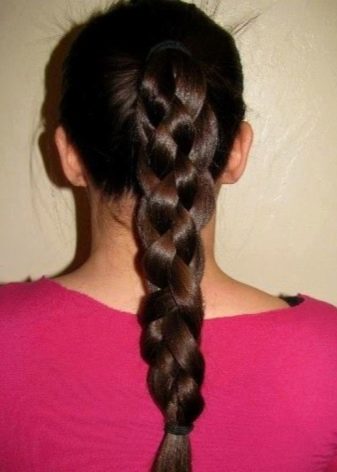
The French braid is inverted simply, although it looks intricate.

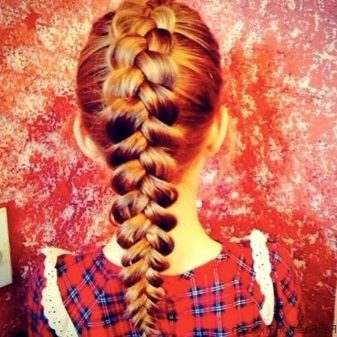
A braid on one side with strongly elongated strands gives the girl's image a special tenderness.
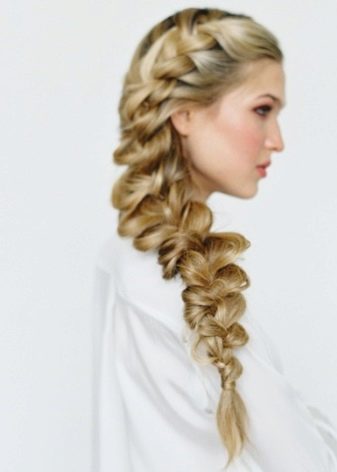
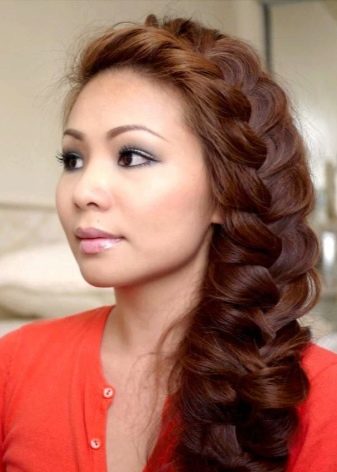
Two French braids - the hairstyle of a real princess.
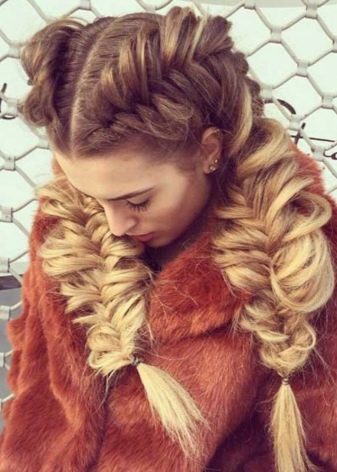
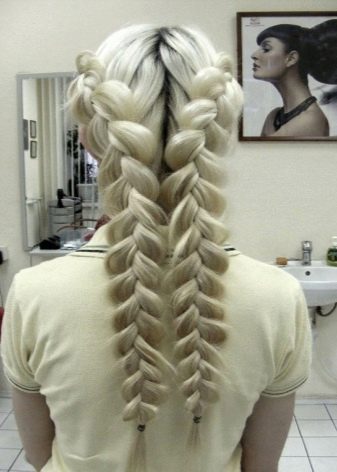
“Fish tail” allows you to create a magnificent, interesting styling.
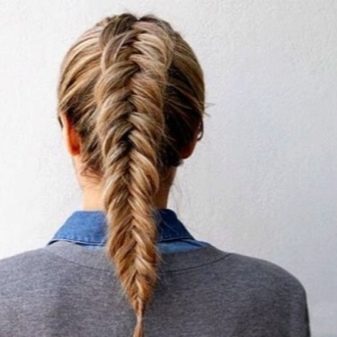
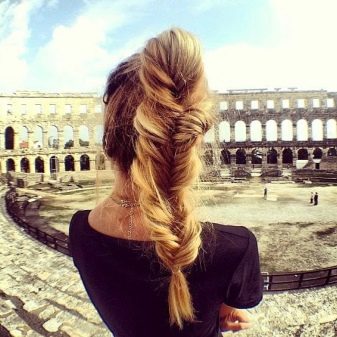
About how to weave two voluminous braids, see the next video.










